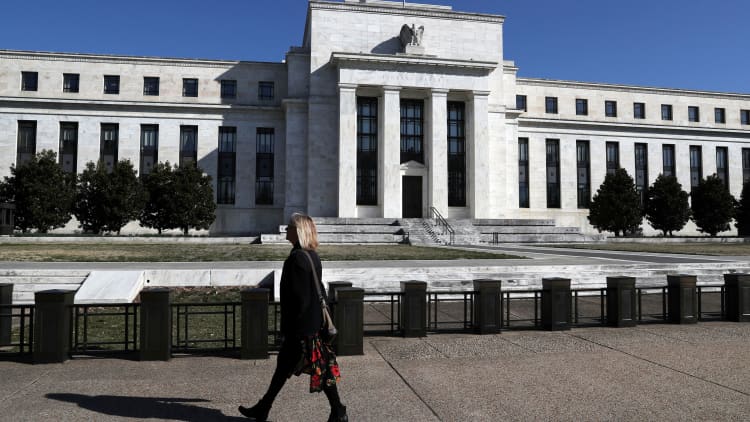
U.S. government debt yields moved off their lows Wednesday after the Federal Reserve failed to guarantee cuts beyond its second quarter-point reduction for 2019.
The Fed approved a rate cut of one quarter point on Wednesday, but offered few hints as to its plans to loosen monetary policy further into 2020. Following its two-day policy meeting, the central bank said it would lower its benchmark overnight lending rate to a target range of 1.75% to 2%.
The yield on the benchmark 10-year Treasury note which had fallen as much as 6 basis points ahead of the FOMC meeting, trimmed its fall to about 5 basis points to 1.76% after the decision. Yields rise as prices drop.
The FOMC also did not point to further cuts, a sign some market commentators deemed more restrictive — or hawkish —than anticipated. Three Fed regional presidents – Esther George of Kansas City, Eric Rosengren of Boston and James Bullard of St. Louis – each voted against the cut.
This market reaction is exactly consistent with what you'd expect out of a "hawkish cut," said Jim Caron, Managing Director of Global Fixed Income at Morgan Stanley Investment Management. "The big disappointment was that there wasn't an entree into doing more in response to trade tensions or oil" price action.
Caron added that the Fed's hesitation to lower rates further compared to the relatively looser European Central Bank "will drive the dollar."
"A strong dollar is bad for weaker global asset prices because a lot of debt is priced in dollars," he added. "Emerging markets do poorly, U.S. exports do poorly ... it's a much more challenging environment."
The U.S. central bank on July 31 cut rates for the first time since December 2008 with those in favor citing slower economic activity, "muted inflation" and tensions between the world's largest trading partners.
But while Powell categorized the July cut at the time as a mere "midcycle adjustment" based on a comparatively healthy domestic economy, the U.S.-China trade war worsened almost as soon as the Fed announced the cut. President Donald Trump on Aug. 1, one day later, announced that the U.S. would extend tariffs to practically all Chinese imports and scolded Beijing for reneging on promises to buy American crops and stem the sale of Fentanyl.
The Fed's also had trouble keeping the effective federal funds rate — the actual interest banks charge each other overnight — below the upper bound of its target range between 2% and 2.25%. The effective federal funds rate rose to 2.3% on Tuesday, breaking above the range for the first time since the global credit crisis more than a decade ago as a confluence of factors including corporate tax day and less liquidity pushed the price of capital up.
The president's proclamation — as well as the Fed's hesitation to guarantee additional rate cuts — roiled financial markets and sent investors fleeing for the safety of U.S. debt, a trend that would continue for the entire month. Demand for long-term, positive yield proved so high that the yield on the benchmark 10-year note fell more than 50 basis points in August, bottoming at a 3-year low of 1.43% on Sept. 3.
Inflation also remains a tricky issue for Fed officials, who seek to both maximize employment and keep prices stable. While the labor market remains strong with an unemployment rate of 3.7% near historic lows, the inflation outlook looks muddled.
The Labor Department's report on August prices showed that U.S. consumer prices rose slowly in August, dampened by weak energy prices that weighed down an otherwise firm uptick. An attack on Saudi Arabia's oil processing facilities over the weekend could obscure the inflation picture even further.
The consumer price index, which measures the costs Americans pay for items ranging from light bulbs to lawn mowers, inched up 0.1% between July and August. Core prices, which exclude volatile energy and food components, rose 2.4% from a year earlier, the fastest annual pace since 2008.


